Matt Grech
Content Marketing ManagerSmartling
Spotify has completely reimagined the way we listen to music. With instant access to your favorite artists and songs under one roof, it's easier than ever to connect with the music that moves you, from all around the world.
And by collecting and repurposing data around our listening behavior, Spotify can even recommend new artists, genres or even the right music for your mood, creating a sticky user experience that keeps listeners engaged and curious.
To really take advantage of this data to create an awesome, personalized experience for listeners, Spotify introduced Wrapped in 2018, giving users a glimpse into their favorite songs, artists and genres throughout the year with a personalized playlist.
Well as 2019 came to a close and we said good-bye to another decade, many listeners were eager for our year in review. But Spotify surprised us all with something pretty special. Spotify 2019 Wrapped was a complete look back at our listening patterns not only from the past year, but even all the way back to 2010.
What was 2019 Wrapped?
Spotify created a compelling, visual experience to provide listeners a fun and in-depth look into how their musical taste has evolved, or even remained the same, over the last ten years.
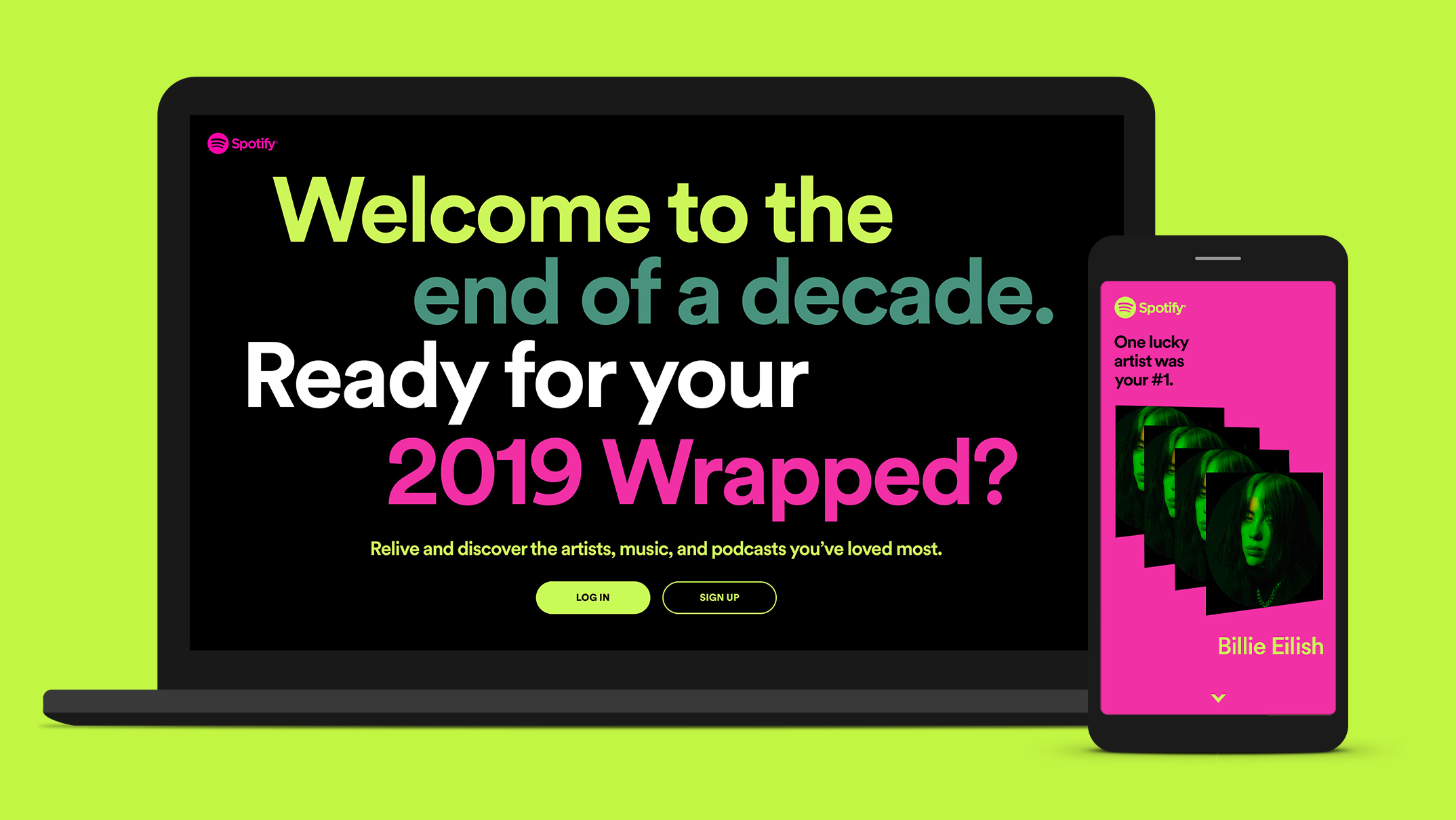
In previous years, Wrapped was pretty simple: just a playlist of your favorite songs that you could listen to or even make public to share with friends.
Spotify had made waves with their previous examples, and began advertising for Wrapped 2019 fairly early. But what really took us by surprise was the execution of the experience.
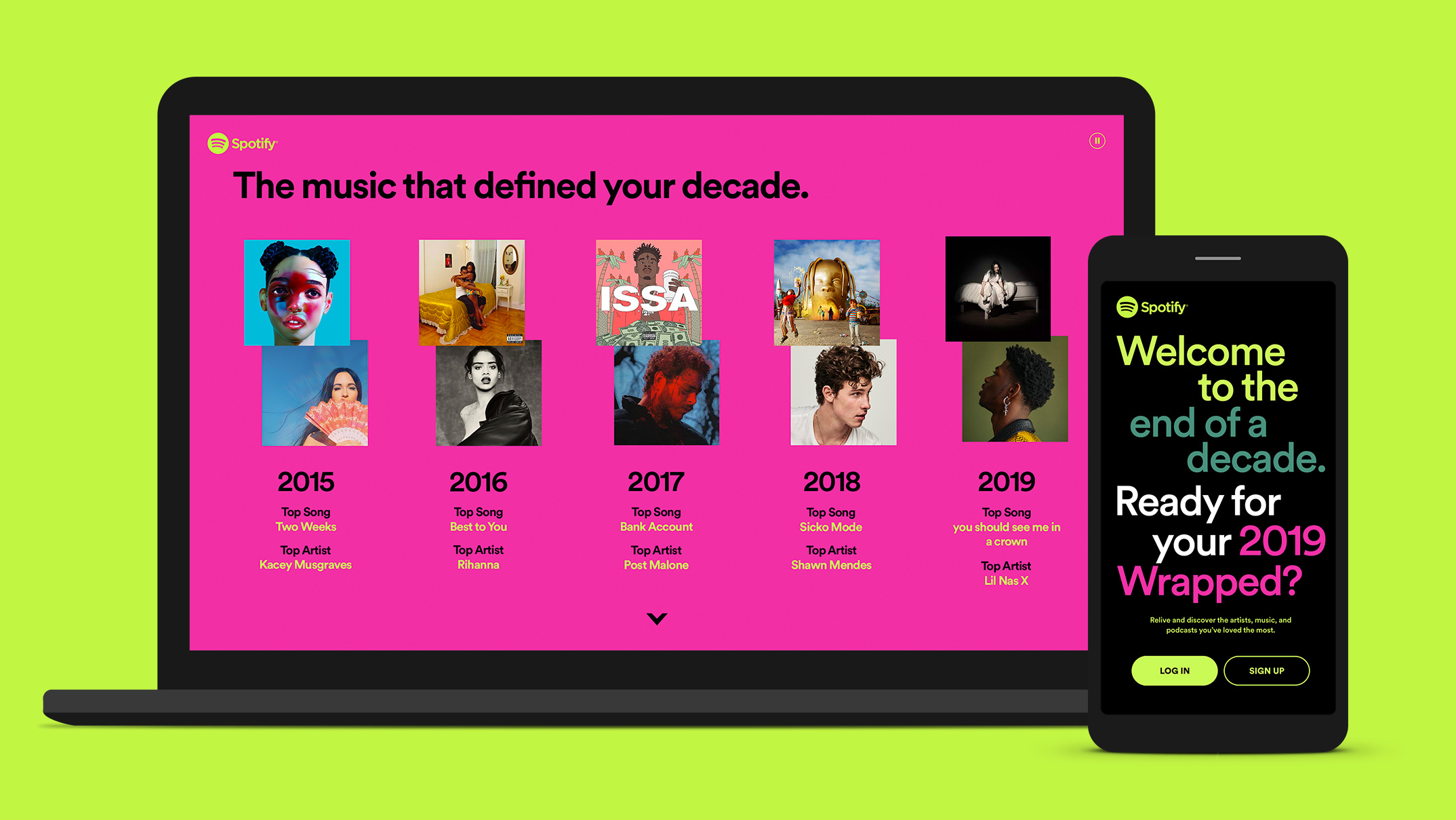
Opening the Spotify mobile app on the morning of December 6, 2019 provided users with a visual story, a completely illustrated rundown of your entire decade of listening in review.
A closer look at the experience
The experience itself was simple, and the beauty is within the execution of that simplicity. Driven just like Snapchat or Instagram stories we've grown familiar with, Spotify 2019 Wrapped included a series of really well-designed "information cards," highlighting specific data and details surrounding that info.
Like in the past, users could browse Spotify generated playlists -- both your own personalized playlist and global favorites -- but within the Spotify app is where the experience really shined. Users were taken on a journey through their decade of listening, covering:
- Favorite artists
- Most played songs
- Genre preferences, and how this changed over time
- Favorite podcasts
- Global listening -- where are the artists you listen to from?
Personally, I opened up Spotify during my daily train ride to jump into my morning playlist, and was surprised to be greeted by this really cool visual story of how my listening patterns have grown over the years.
What would have been just a normal train ride into the office listening to the same playlist as every other day turned into this really cool journey through the past. I ended up rediscovering some of my favorite old songs, and added a few of my favorite artists back into my rotation.
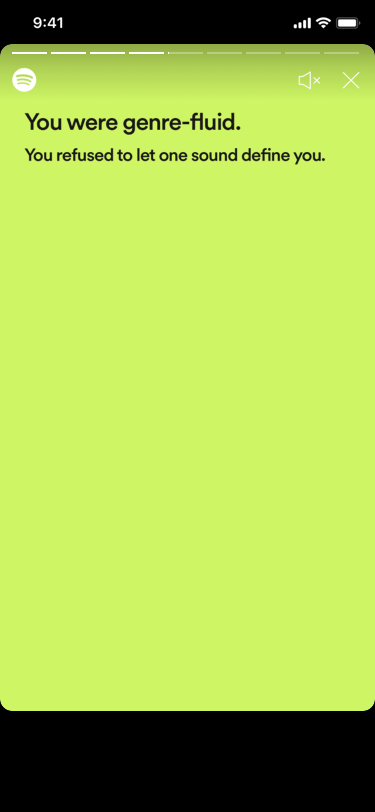
The story itself flowed naturally, and moved throughout the years and data almost logically. We were shown cards highlighting each year in the decade, how much time was spent listening in each year, and some really interesting visuals to aid in the presentation, like a unique graph to highlight favorite genres with a visual comparison.
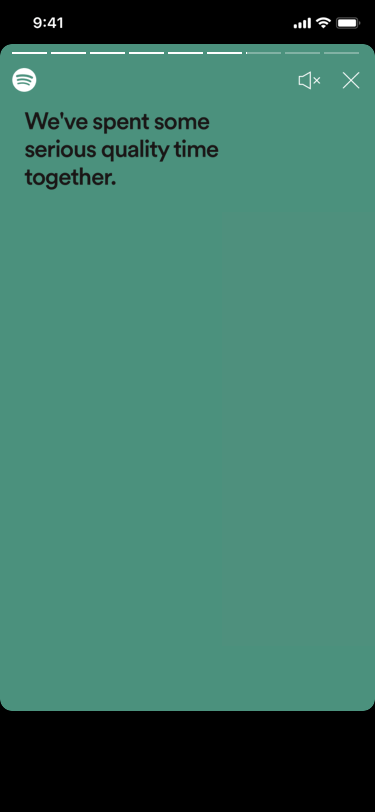
Overall the experience was natural and organic, it felt familiar to apps and experiences we have grown to use everyday, but injected its own unique blend of data, style and story telling.
After viewing the entire story, users had the option to share their 2019 Wrapped in a share card. These were instantly generated and captured some top stats about your listening history in a nicely designed image card.
The idea was to get listeners sharing their Wrapped data on social media, both furthering the discussion and driving new user adoption.
World-class citizen
Something that really struck a chord with me (no pun intended) was a global view of your listening history to highlight on a world map where your favorite artists are from.
This shows both how universal music is, crossing borders and breaking down language barriers, but also how global a digital experience like Spotify has become.
Spotify is able to connect listeners back to their home culture and even enables users to discover entirely new genres, artists songs and ultimately new cultures.
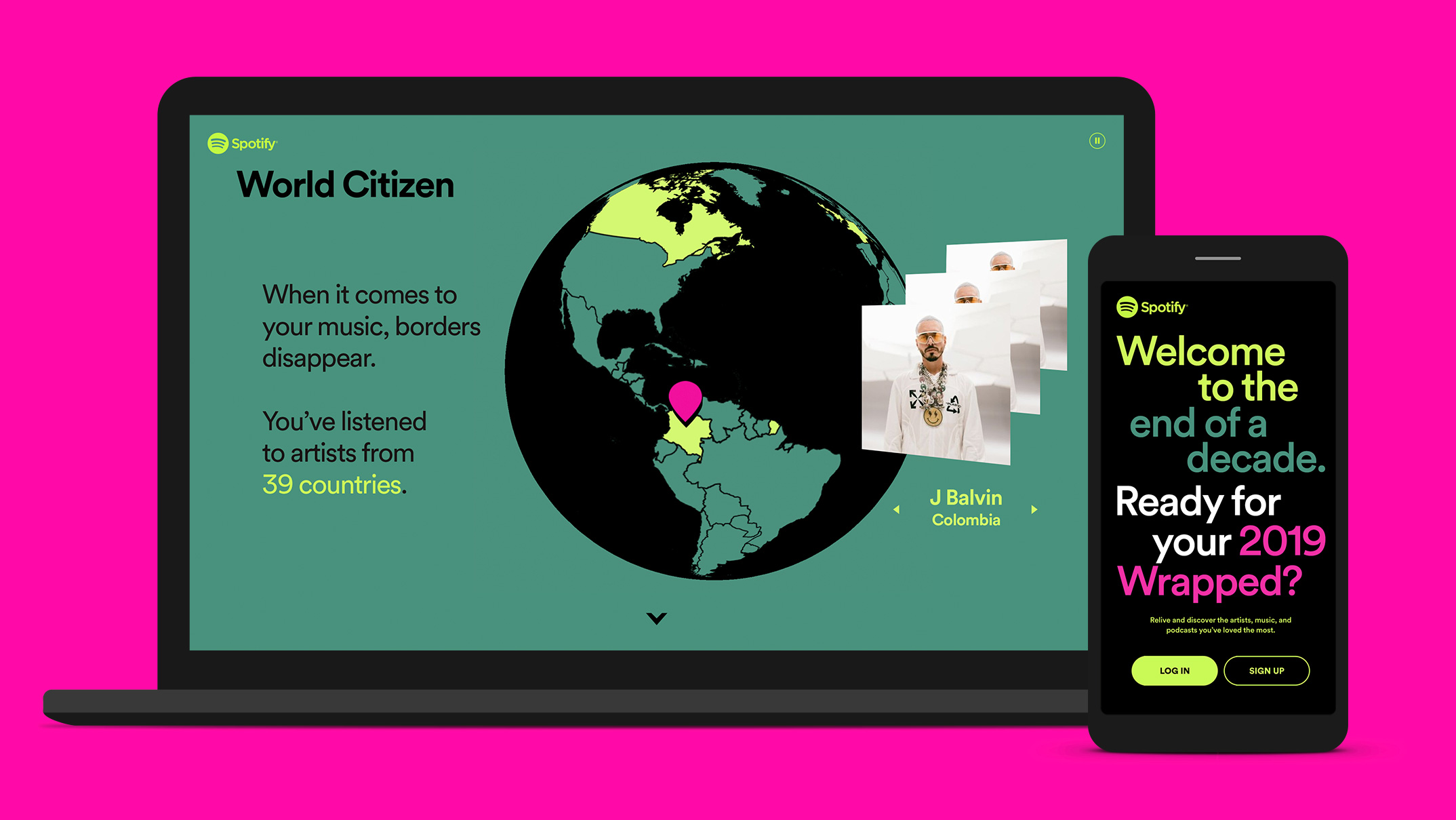
This just goes to show how digital experiences are always global products, right from day one. Users all around the world have access to your platform, and are actively seeking the ability to connect on a global level.
And this example of Spotify highlights how important language accessibility really is. We all listen to music all around the world, so why limit your service to just one demographic or region?
By translating and localizing your experience for users all around the world, you open up both the potential for growth, but also the potential for relationships to foster and thrive on a global scale. Your experience can reach every last person on Earth.
What made Wrapped so succesful?
Spotify took advantage of an awesome opportunity in front of them. With so much data at their fingertips, like individual song listens, favorite artists, and preferred genres, it made perfect sense to leverage this data into a compelling experience.
Its all interesting and relevant information to the listeners, and the experience works to keep users engaged by leveraging in a personal touch. After all, it's your top listening data, not Spotify as a whole.
And by adding in a sharing element, Spotify was able to get people talking -- it was almost impossible to flip through your Instagram stories or twitter feed and not see someone talking about their 2019 Wrapped for a few days. Overall, that keeps existing users coming back, and drives interest around the product and experience to bring new users in.
Spotify even created share cards for artists that showed total fan hours streamed, highest number of fans per hour, and from where around the world your music was most played, again furthering that concept of a globally connected community.
How could Spotify localize the experience?
Now, Spotify already does a pretty great job of localization. Their desktop and mobile apps are both available in 26 different languages, and music from all over the world is readily available for streaming.
When it comes to personalization, Spotify already does a great job of serving the most relevant music to listeners, curating custom playlists and recommendations.
But, running with their idea of a World Class Citizen, and connecting listeners around the world through the music they love, Spotify actually had an awesome opportunity to add in another level of localization.
What if Spotify made it possible for users to quickly translate their Share Cards into a different language? That would enable users to connect with listeners that may not speak the same language, but share the same love for a specific artist or genre.
For example, there's a lot of American fans of Korean Pop music, yet chances are most of them don't speak Korean. What if their Wrapped 2019 share card could have been instantly translated into Korean for them to share online, allowing them to join in the conversation with Korean fans.
By creating a universal experience that can be shared by users around the world, no matter what language they speak, Spotify could tap into something really big here.
Create the best experiences possible
Brand experiences are what get people talking. They help get users interested, drive adoption, and even keeps users coming back. I know I'm excited for my 2020 Wrapped to see how my taste changed in just one year, let alone the last 10.
That's a clear incentive for me to keep using Spotify all year long! It's not something extra I pay for, but just an added bonus that makes the service even more compelling and sticky.
Spotify created an amazing experience with information and data they already had. By adding in a visual and interactive element, they made a fun and exciting and personalized experience that users will remember.
And by adding in an extra layer of connection with localization and translation, Spotify can not only extend this experience to more users, but even enable social sharing and word of mouth discussions to naturally foster a community between listeners.









